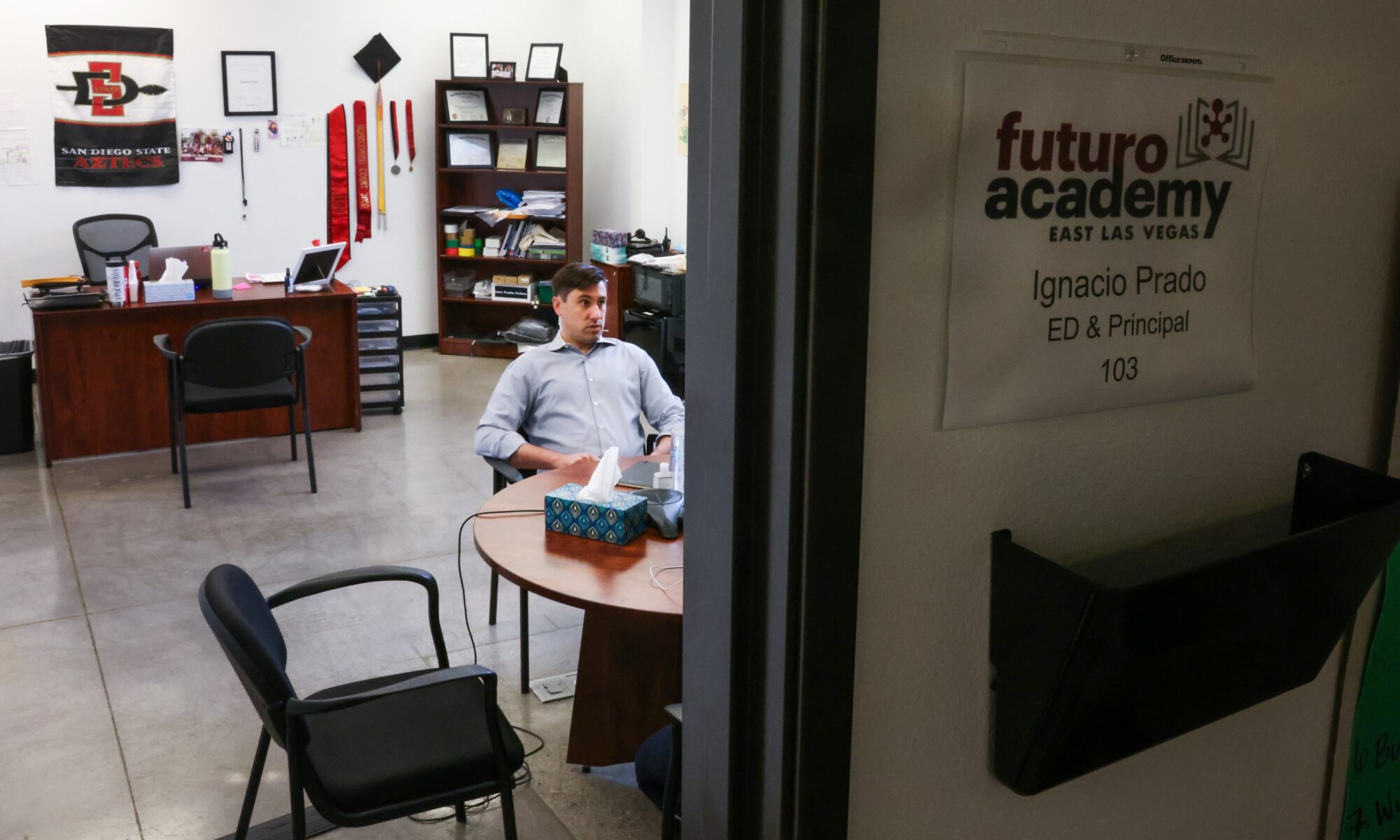Officials say the pandemic prompted student disengagement that schools are still reeling from. They favor strategies that incentivize, not discipline, students.
Ignacio Prado has noticed a change at Futuro Academy in East Las Vegas ever since the pandemic: More parents are keeping their kids at home if they are sick.
It’s a factor that Prado, the K-5 charter school’s executive director, says is contributing to the school’s absenteeism rates, which decreased in the 2022-23 school year from the year before (from 57 percent to 38 percent) but remains much higher than before the pandemic (28 percent).
“When I have conferences with families, they just sort of say back to me a lot of what we said to them during the pandemic around not wanting to get other people sick,” he said. “Before the pandemic, coming to school with a cough wasn’t that big of a deal.”
The absenteeism rates at Futuro Academy mirror what’s happening statewide. Chronic absenteeism, which is when a student misses at least 10 percent of school days, decreased slightly in the 2022-23 school year in Nevada but remains significantly higher than before the pandemic, according to data released last month from the Nevada Department of Education (NDE). Nearly 35 percent of Nevada students were chronically absent in the 2022-23 school year. In the final year before the pandemic hit, around 19 percent of students were chronically absent.
While there are many reasons why a student may miss school, state education officials say the pandemic has spurred exponential rises in absenteeism rates. They’ve noticed greater health consciousness and emphasized how significant time away from in-person learning fostered a general decrease in student engagement that schools are still reeling from.
“It takes relatively little time for students to disengage,” said Christy McGill, the state’s deputy superintendent for educator effectiveness and family engagement. “But what we’re learning is that it takes a longer amount of time to reengage.”
Chronic absenteeism covers all school absences, with exceptions for a positive coronavirus test and when a school district receives notice from a medical or mental health professional that a student is not fit to go to school. State data shows that students with high absenteeism rates in kindergarten and first grade are much less likely to be able to read by third grade. Absenteeism also is a key determinant of dropout rates.
There is no one way to curb chronic absenteeism, education officials said, but they added it is important to come up with strategies specific to each student’s circumstances and incentivize students to come to school, rather than discipline students for missing school.
Schools tend to use different approaches depending on the student, including home visits, attendance monitoring and engagement with the student’s parents. The state has also for years partnered with UNR to provide training to schools on an approach that moves away from using discipline to address absenteeism.
New efforts are also in the pipeline. The Clark County School District (CCSD) launched a program last month to curb absenteeism rates, and the state is looking at using Medicaid funds to bring in more mental health professionals in schools, McGill said.
“We don’t have enough adults in our buildings,” McGill said. “Not only teachers, but school counselors, school [psychologists], school social workers and community health workers.”
Absenteeism soared after pandemic peaks
The 35 percent of Nevada students who were chronically absent last year was a 1 percentage point drop from the year before, but nearly double the rate (19 percent) from the final year before the pandemic.
Two-thirds of public schools reported drops in chronic absenteeism last school year. Of those schools, the average decrease was around 6 percentage points, according to a Nevada Independent analysis.
However, almost all schools still report absenteeism rates higher than they were before the pandemic. The average absenteeism change between the last school year and the 2018-2019 school year was an increase of 16 percentage points.
Continue reading the full story here:
This story was shared with permission from The Nevada Independent and was originally reported by Eric Neugeboren and Rocio Hernandez.
